11 English Garden Ideas to Elevate Your Outdoor Space
By Axis Fuksman-Kumpa • November 7, 2022

The popularity of English gardens spans far beyond England’s borders. They are famous around the globe — and for good reason.
Charming and romantic, English gardens look straight out of a fairytale, and their beauty is unmatched. Swaths of brightly colored flora organized in a way that feels both thoughtful and carefree, these gardens are picture-perfect.
The good news is, you don’t need to live in England or have a sprawling countryside estate to enjoy an English style garden. With a little planning and some smart design choices, you can achieve an authentic look with any size outdoor area no matter where you’re located. This style of garden might feel unattainable, but it's actually quite simple to recreate.
Keep reading to learn more about the elements of an English garden and explore ways you can achieve the sought-after look on your property.
What are the characteristics of the English garden?
When talking about English style gardens, it’s important to note that there are two variations: English cottage gardens and English country gardens. Both variations are known for their lush green lawns, manicured hedges and plethora of colorful flowers, but they have some differences too.
An English country garden is all about structure and order. Country gardens are formal, with neatly clipped hedges, well-defined flower bed edges and a stately green lawn. They typically feature multiple garden areas that are connected by pathways and have formal seating areas, such as stone benches, throughout.
An English cottage garden, on the other hand, is less organized and more informal. They look more wild and unkempt than country gardens and are known for their bold, bright colors. The natural style of a cottage garden inspires creativity and whimsy.
Both styles are growing in popularity among gardeners of all skill levels.
What do you put in an English garden?
If you want to achieve an authentic English garden look, you’ll need to choose the proper plants and flowers. We recommend a mix of perennials and annuals with varying heights. Delphiniums, foxgloves, peonies, clematis and hollyhocks are all standard in English style gardens.
Ornamental grasses and tall architectural plants are becoming more popular in English garden design too.
In addition, mix in some bulbs for spring and summer and other plants that are seasonal. This way, you'll have a gorgeous, full garden that's in bloom all year long.
11 Easy Ideas to Execute a Cottage Garden in Your Yard
So now that you know the basics of what an English garden is and what work well in it, it’s time to explore the many ways you can create your own in your outdoor space. Here are 11 English garden ideas that will help you achieve the whimsical, enchanting outdoor oasis of your dreams.
It's All About the Pathways
Pathways are common in this type of garden and can pull the entire space together. Meandering paths are a great way to connect various areas of your garden and make it easy to explore. These paths can be made from a variety of materials, from gravel and mulch to cobblestones and stone pavers.
You can also line your pathways with well-trimmed shrubs or landscape lighting so you can enjoy your garden at night too.
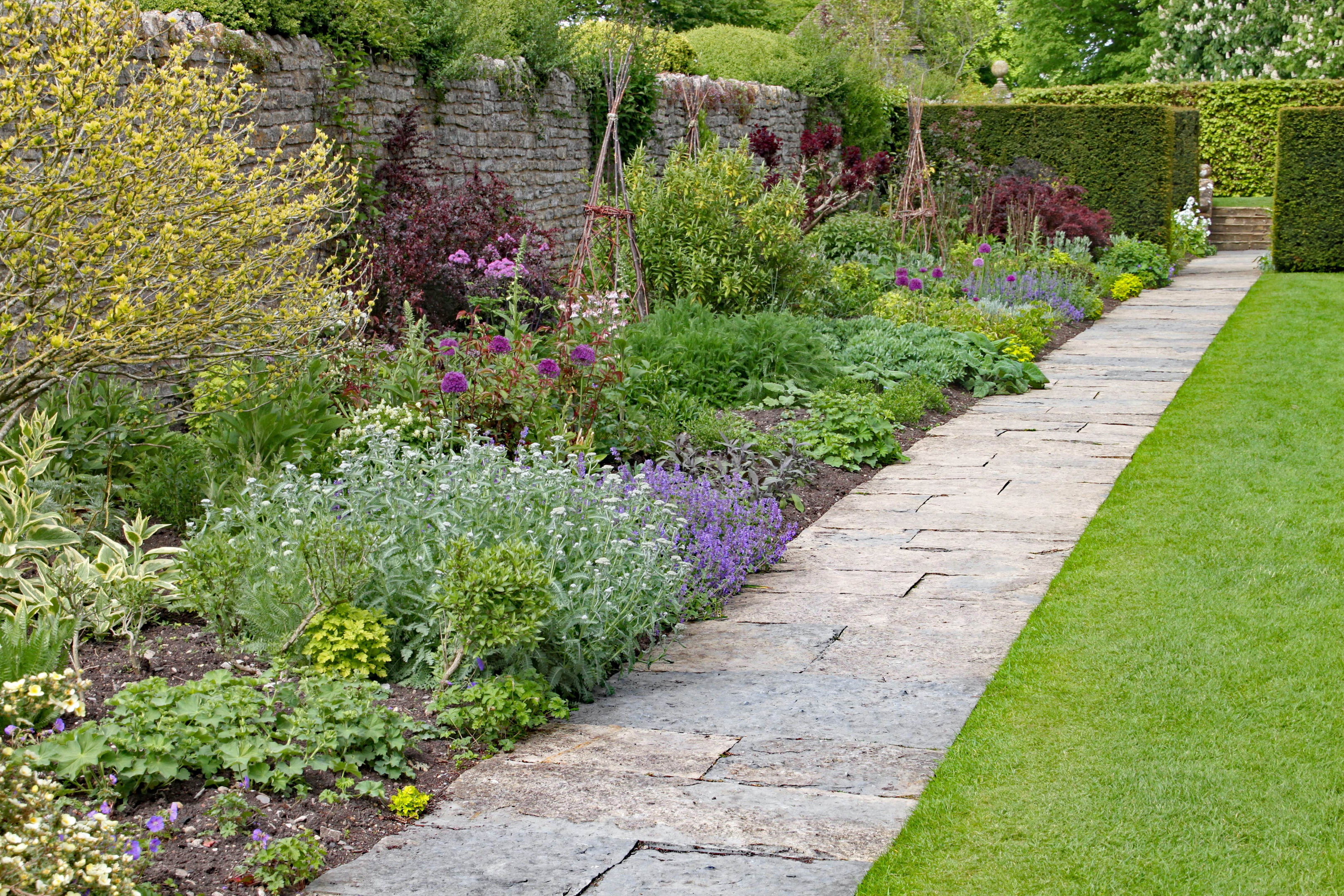
Add Countryside Charm
In addition to flowers, there are other elements you can add to your garden to give it the look of a traditional English garden. A water feature, such as a pond or a fountain, is an essential aspect of an English garden and adds a sense of tranquility.
Structures such as trellises, arbors and pergolas are also common in this style of garden and add some visual interest. Whichever you choose, cover it with climbing roses, wisteria or other flowers to create a focal point.
White picket fences are another popular aspect of English garden design and an easy way to add charm to any environment. Incorporate plants that can partially cover the fence, such as a climbing rose or trumpet vine, to make it feel like a thoughtful part of your overall landscape design.
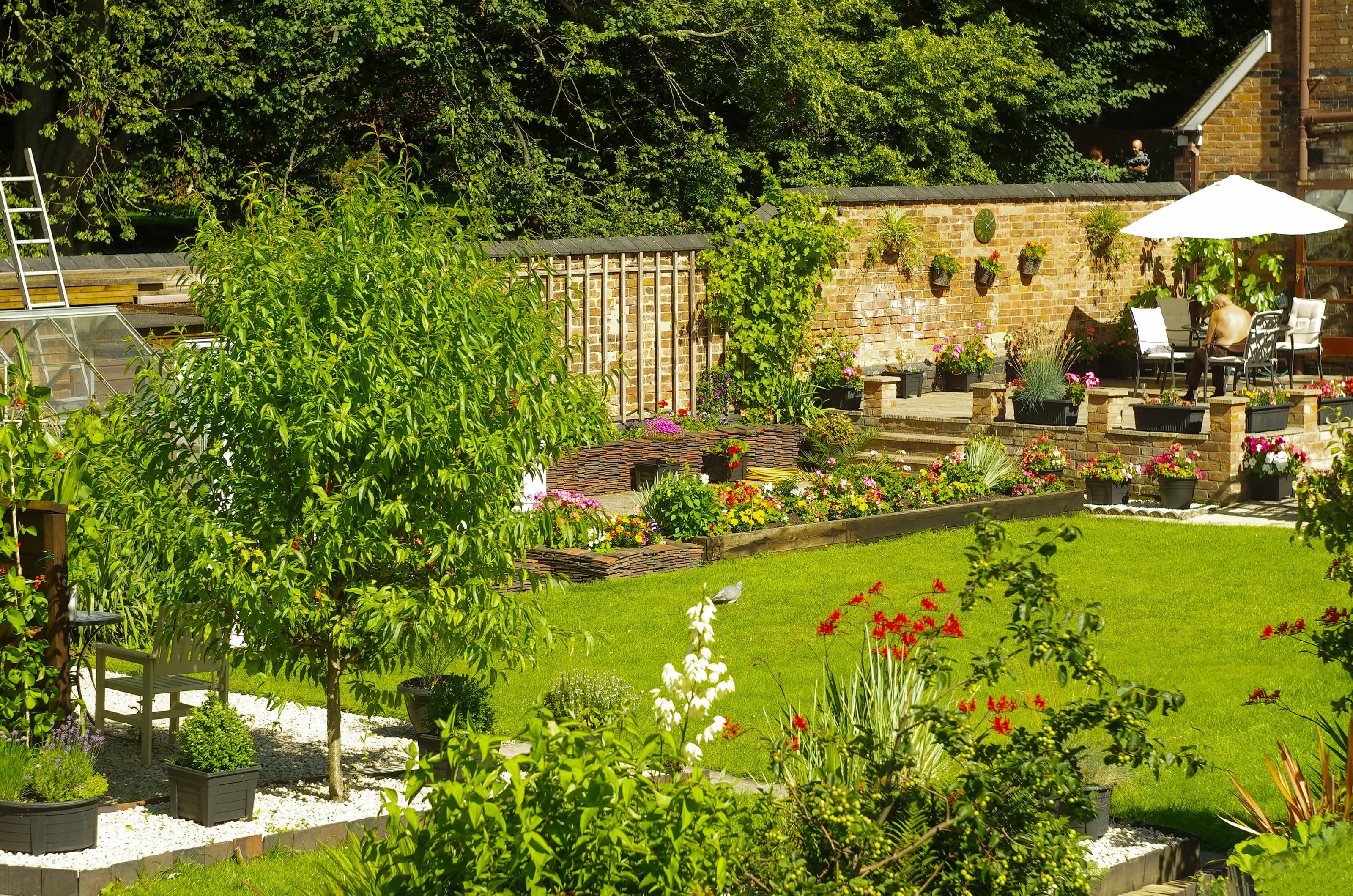
Hedges as Fencing
Green hedges that surround a property and act like a fence create a classic English style look. They don't have to line your entire yard though. You can also place them around a small section of your garden or one of your water features. Use them to define different spaces throughout your yard and offer a bit of privacy.
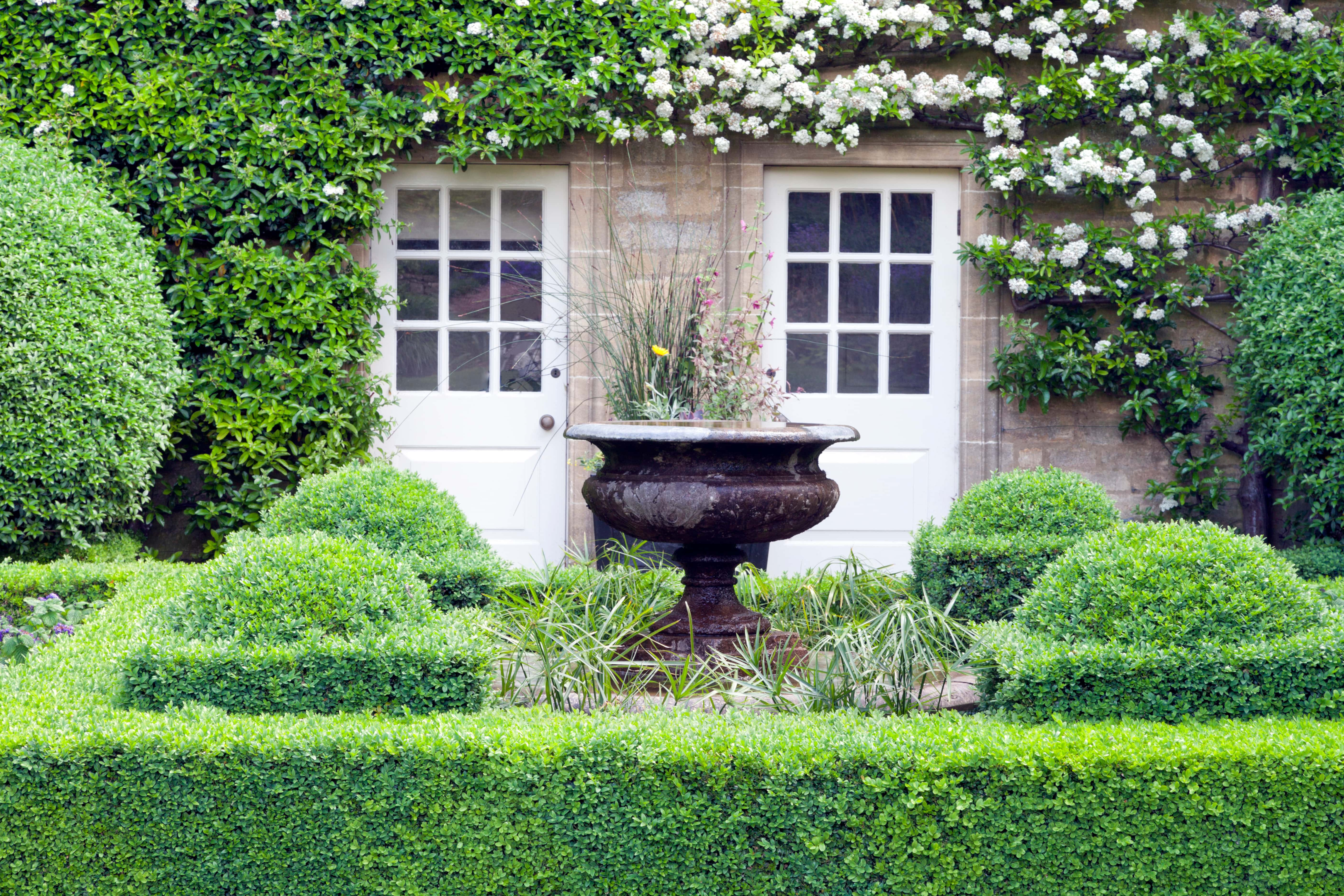
The More (Flowers) the Merrier
Have a lengthy list of flowers you want to incorporate into your garden? Don’t worry! English style gardens provide an opportunity to incorporate lots of your favorites. Planting a variety of flowers will only add to the beauty of your garden. Pink flowers, red roses, pretty perennials — there's room for all sorts of flowers in an English-inspired garden.
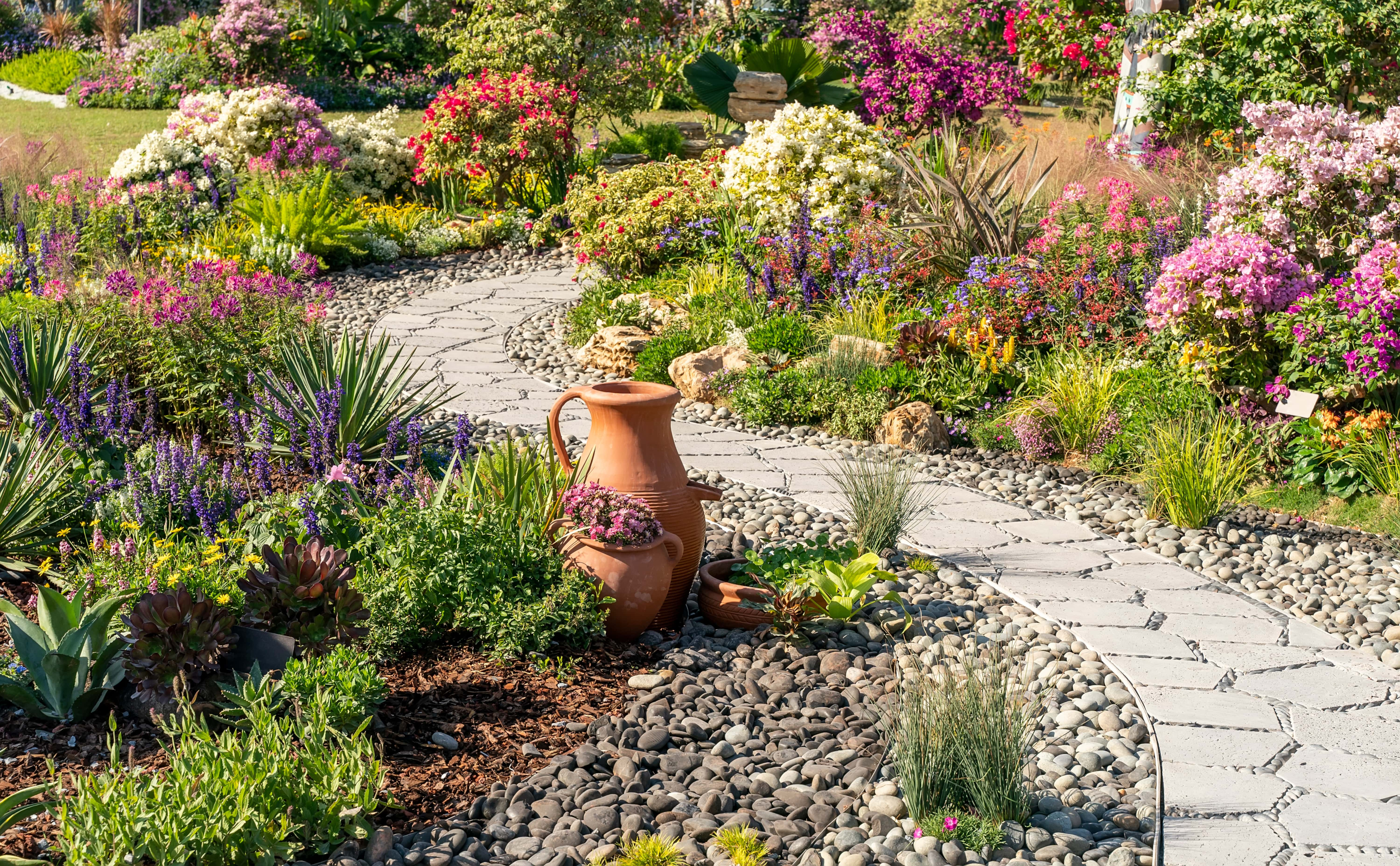
Try the Classics
If you want that classic English garden aesthetic, roses and lavender are a must. To add depth and visual interest, layer rambling roses behind shrub roses or train them to grow over your house or patio.
Fruit trees are a staple in cottage gardens, and other magnolia trees are another classic choice for either a cottage garden or a country garden.

Create Structure through Layers
Creating structure in your garden is easier than you might think. When organizing your garden, focus on creating well-planned layers so it looks full but strategic. Your upper layer should include trees or tall shrubs, while mid-height shrubs, flowers and ornamental grasses will make up your main layer. Use edging plants to create a distinct but natural separation between your garden and the rest of your yard.
Sticking to a specific color scheme and incorporating it into your layers can also help make your garden feel more structured.

Feature Lawn
While we often talk about minimizing lawn space, a feature lawn with lush green grass is a key element of English garden style. Your feature lawn can be a small space within your overall garden design — just make sure it stands out. Or, if it's on the larger side and you're wondering how to fill some of the space, consider adding a fountain, statue or some trees.
Knot gardens are another excellent — and visually appealing — option to include in your feature lawn. These gardens feature intricate patterns formed by planting clipped shrubs.
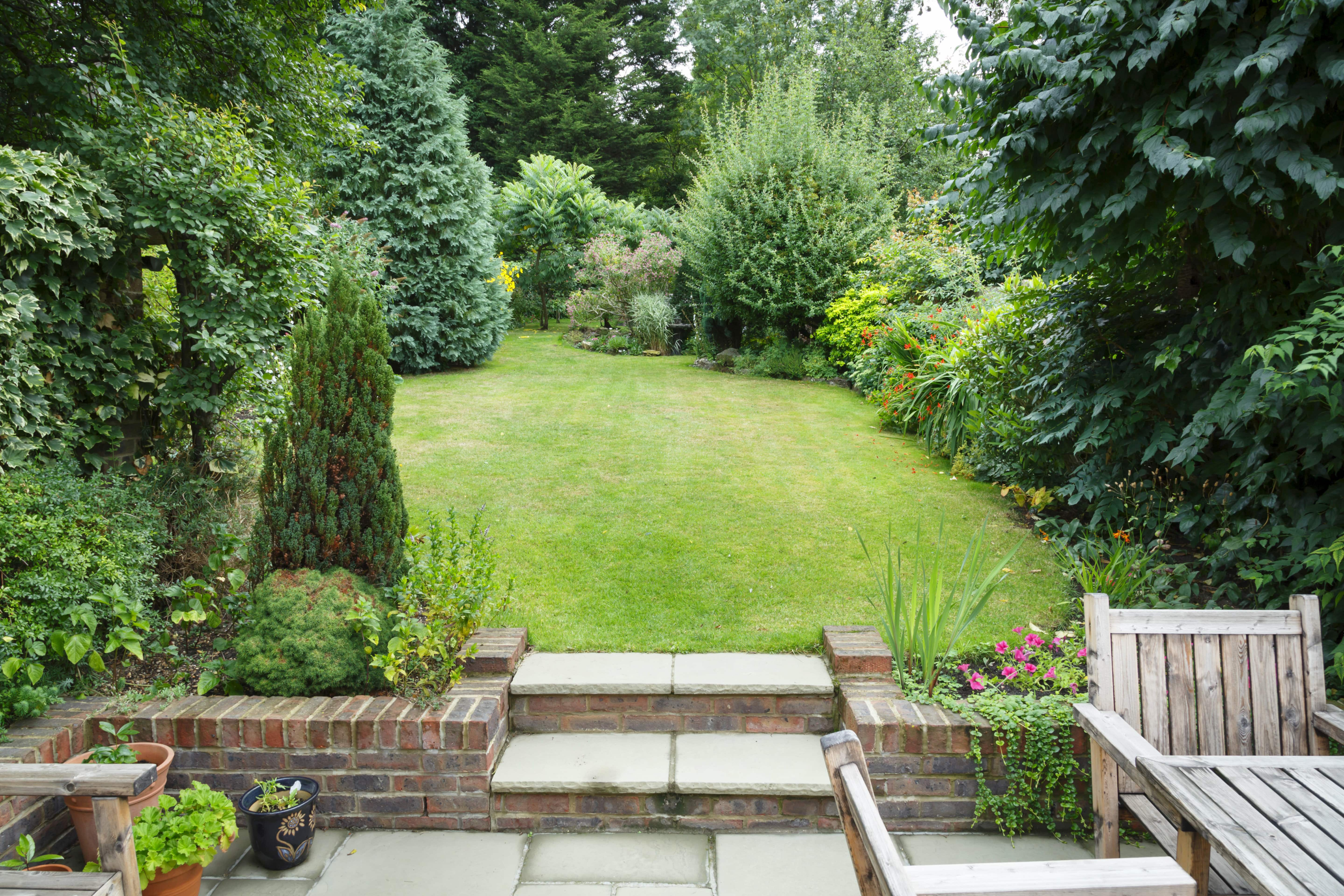
Make an Entrance
First impressions are everything, so make the entrance to your English garden a showstopper. A trellis covered with flowers, vines and climbing plants is a great way to mark the entrance of your garden.
Or, draw the eye to the garden's entryway with stone walls on either side. We recommend planting flowers along the walls too. Give your visitors a small taste of what they'll find inside the garden and get them excited before they step foot in it.

Unexpected Garden Layout
While it might seem like English style gardens come with a strict set of rules you have to follow, don’t be afraid to get creative and make yours unique with an unexpected layout.
Plant flower beds throughout your yard instead of just around its borders and use yew hedging to act as a privacy screen that feels natural and unobtrusive.
Build a covered dining area so your garden feels like an extension of your house you can enjoy long after the last days of summer. Love herbs? Dedicate a section in your garden to those too! If you have kids, you can incorporate a play area into your design as well.
Just be sure to connect the various areas of your garden with gravel paths — or paths made from another material of your choosing — so the layout is easy to navigate.
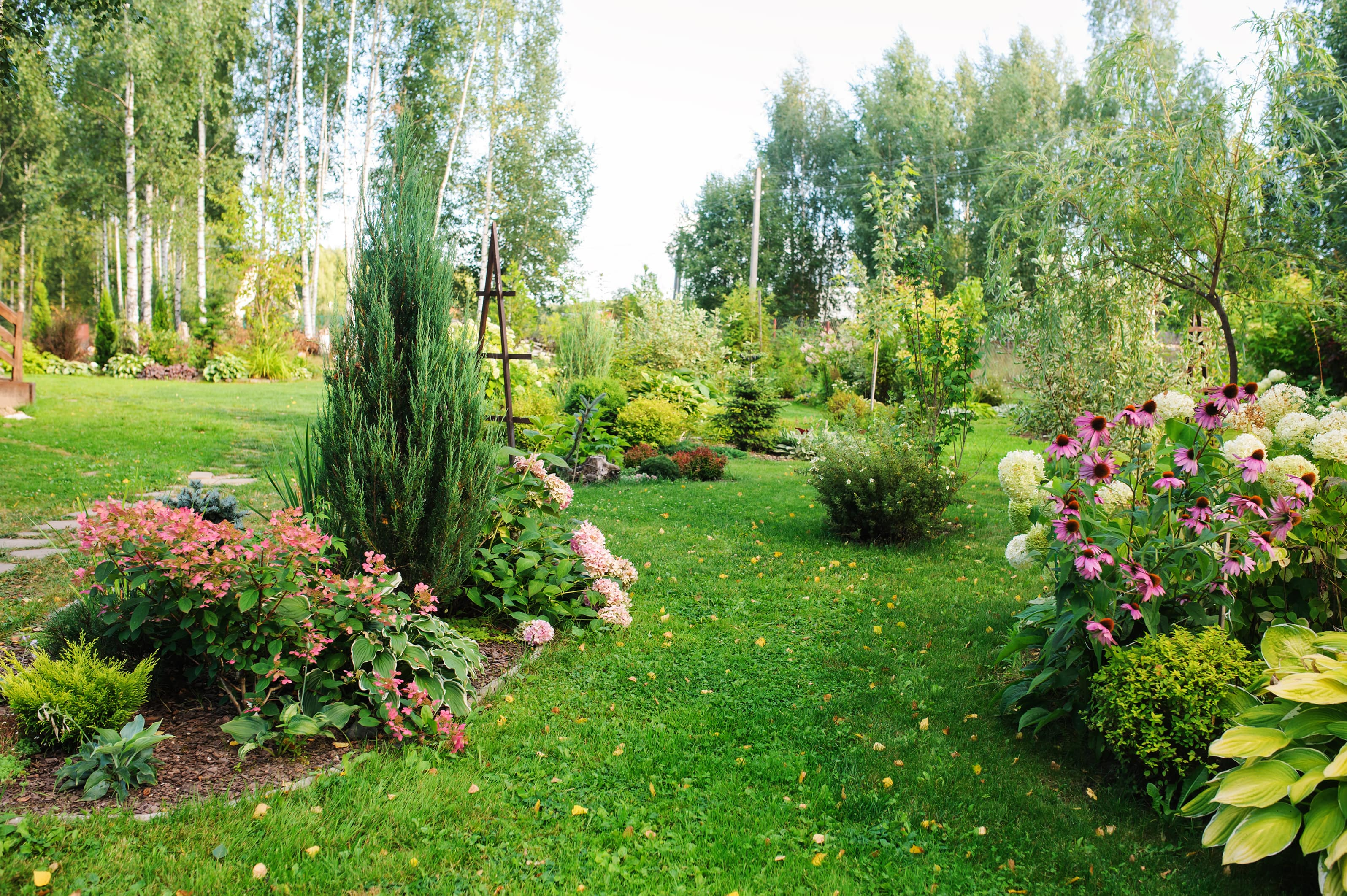
Incorporate Seating
English gardens are meant to be enjoyed, which is why you’ll typically find a bench (or several) spread throughout. If you’re going to stop and smell the roses, you might as well have a seat while doing so.
Stone benches are common in traditional English gardens, though you can opt for a range of different materials, including wood and metal, to create a seating area that makes sense in your environment.
Stone walls or walls made from another material around your benches will give a more intimate vibe. Make a cozy nook where you can read a book, sip your morning coffee or enjoy a glass of wine with a loved one.
Planting flowers nearby will make the benches feel like a cohesive part of your garden.
Finally, don't forget to put paths leading to these areas so they're easy to access.
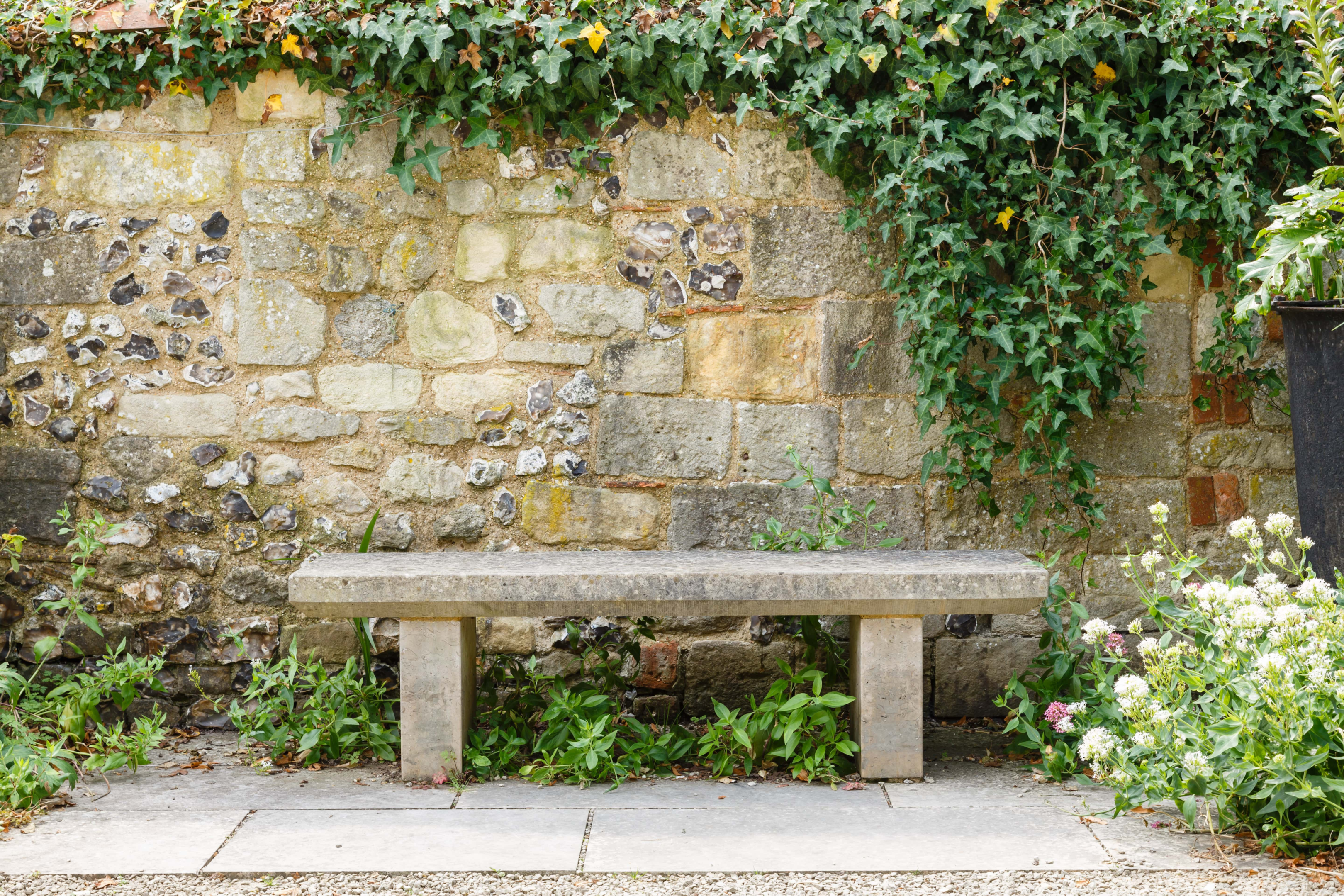
Add a Shed
Adding a shed to your english garden is functional (where else are you going to store all your gardening tools?) but it's also a smart design move. These backyard buildings can be just as charming as the environment they're in. By adding windows with planters, planting some greenery and painting your shed, you can make it a beautiful part of your garden.
If you have enough room, you could opt for a multi-purpose building that acts as both a shed and a guest house. Your visitors will feel like they're vacationing in a secret garden, and you'll increase the footprint of your home.
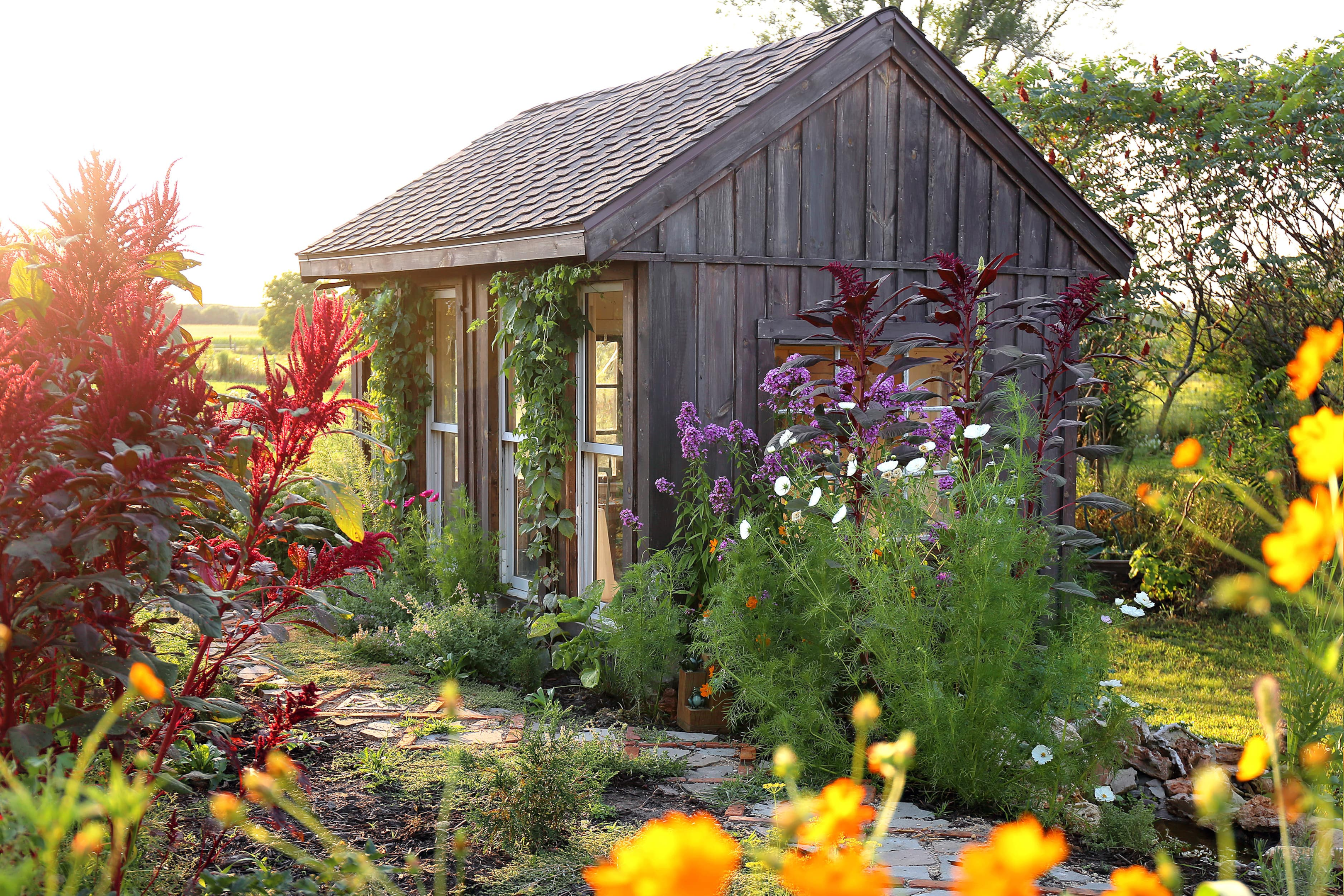
We hope this roundup of English garden ideas has offered you plenty of inspiration and guidance to bring to life the romantic, enchanting backyard oasis of your dreams. If you need some help designing the right style garden in your yard, Tilly's expert team of designers can help! We have team members who can tackles whatever style garden suits you and your home. Want to learn about other garden styles? We've written about zen garden, tropical gardens, modern gardens, and more!
Read more about: Landscape Design Tips, Gardening Tips